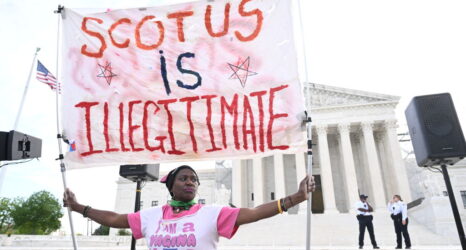The recent victory in Argentina demonstrates that women’s rights are never simply granted; they must be fought for.
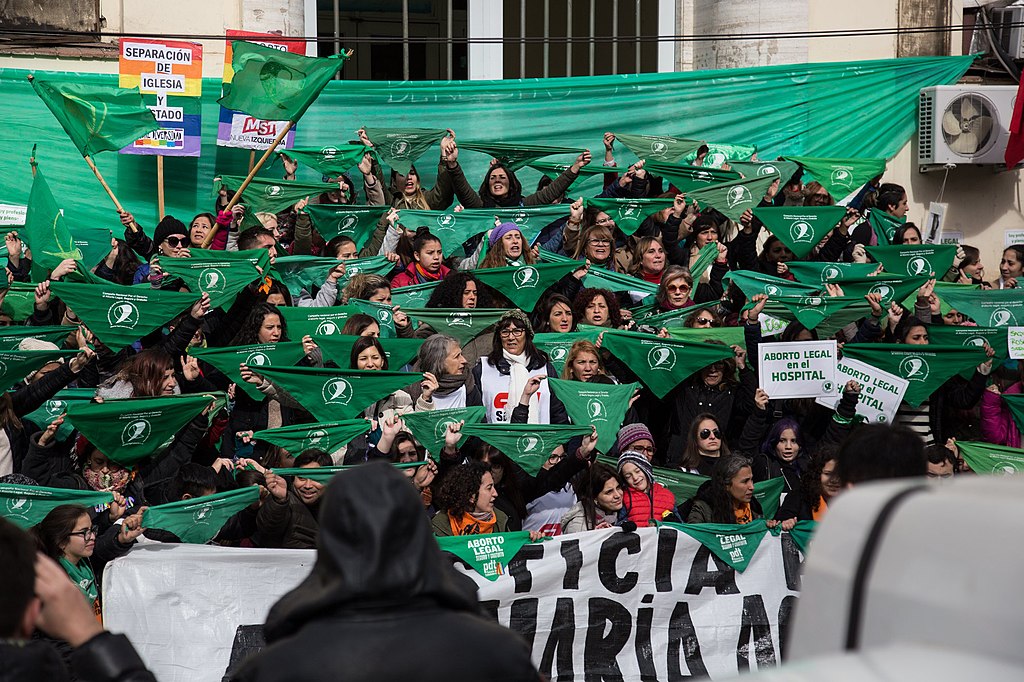
In the early morning hours of Dec. 30—fifteen years after the launch of the Campaign for Safe, Free and Legal Abortion—the Argentine Congress passed a bill to legalize abortion until 14 weeks, a historic move in a region with some of the world’s most restrictive abortion laws.
After a long session that went overnight, closely followed by large crowds outside of the Congressional building, the Senate voted 38-29 to legalize abortion. The streets became a feast of green, tears and joy, hugs and chants overwhelmed the scene.
“It is a day that we imagined and dreamed of many times,” said Dora Barrancos, one of the iconic feminists who have fought for this right from the early years reflected on these events.
For the past 15 years, I have been studying the movements to legalize abortion in Argentina, Chile and Uruguay. The recent victory in Argentina demonstrates that women’s rights are never simply granted; they must be fought for.
Without the presence of a strong abortion rights movement that framed the issue as such, placed it in the national agenda, and raised awareness about it, policy change would have not been possible. The strong presence of the Catholic Church, coupled with the stigma around abortion nestled in the identification of womanhood with motherhood, had created a strong barrier to any policy change. (Argentina is the home country of Pope Francis.)
In fact, most politicians, whether from the right of the left, have perceived abortion reform until very recently as politically costly, a risky issue commonly referred in Argentine slang as ‘pianta votos’—something that scares votes away.
It was the abortion rights movement who was responsible for shifting this perception and showing politicians that times have changed, that new generations have different priorities, that it was possible to win elections advocating for legal abortion. Shifting this balance took many decades of intense active work by the movement.
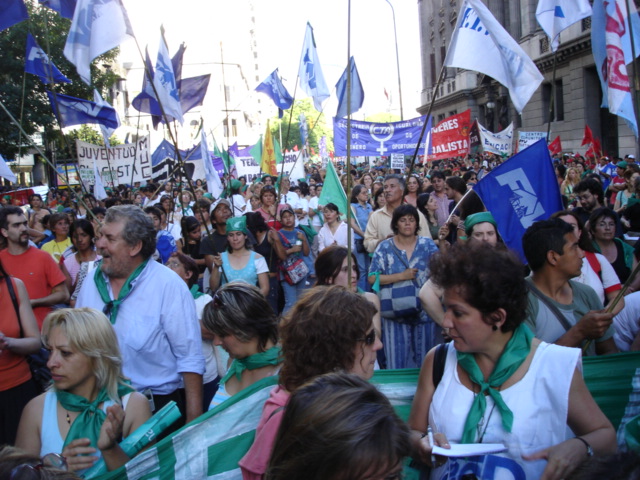
Abortion in Argentina used to be ruled by the 1921 Criminal Code, which said abortion was legal only when the life or health of the woman was at risk and in cases of rape. For most of the 20th century, this regulation was not challenged.
As with other countries with restrictive abortion laws, class divides had deadly implications: Those who could pay for it, got a medically safe abortion. Those who couldn’t afford it, risked their lives and health in their attempts to interrupt their pregnancies.
It was only after the transition to democracy in 1983 that the stabilization of the political system allowed for groups of feminists to raise the need to legalize abortion. These early initiatives were very small, speared by mostly middle-class professional women, and did not have much political impact at the time.
In 2001, a large mobilization of citizens protesting the current political and economic crisis toppled down the government. A wave of activism swept the country, and it was in this context of widespread mobilization that women activists created the Assembly for the Right to Abortion.
These experiences were a turning point for the struggle for abortion rights. The context of general mobilization brought the initial middle-class feminist groups, in touch with women from popular sectors, creating a cross-class alliance that gave the movement a strong foothold from the start.
On May 28, 2005, the International Day of Action for Women’s Health, activists launched the La Campaña Nacional por el Derecho al Aborto Legal Seguro y Gratuito—the Campaign for Safe, Free and Legal Abortion.
In the early years, the campaign reunited approximately 300 organizations (today this number is larger than 500) including women’s groups, unions, cultural movements, networks of peasants, educators, and respected health professionals and human rights organizations.
The campaign was present in all the country’s 24 provinces, serving as a clear federal movement providing a national platform for activists across Argentina.

Today, following the model of the National Women’s Meetings, the campaign continues to built through a horizontal process and aspires to be highly democratic. There is an annual plenary session where all organizations come together to discuss the status of abortion reform, strategies and tactics to advance the passage of reform.
Raising awareness about the injustices created by the criminalization of abortion was a daily task for activists. To gain visibility the campaign designed an icon: a green scarf (pañuelo) with the main slogan:
“Sexual education to decide, contraception so as not to have an abortion, legal abortion so as not to die.”
Inspired by the famous white scarves of the Mothers of Plaza de Mayo, by 2018, the green scarves were everywhere—on people’s wrists, necks, backpacks, TV shows and of course street protests. Demonstrations have been the main strategy of the campaign, and the number of participants grew exponentially throughout the years, reaching about one million in 2018.
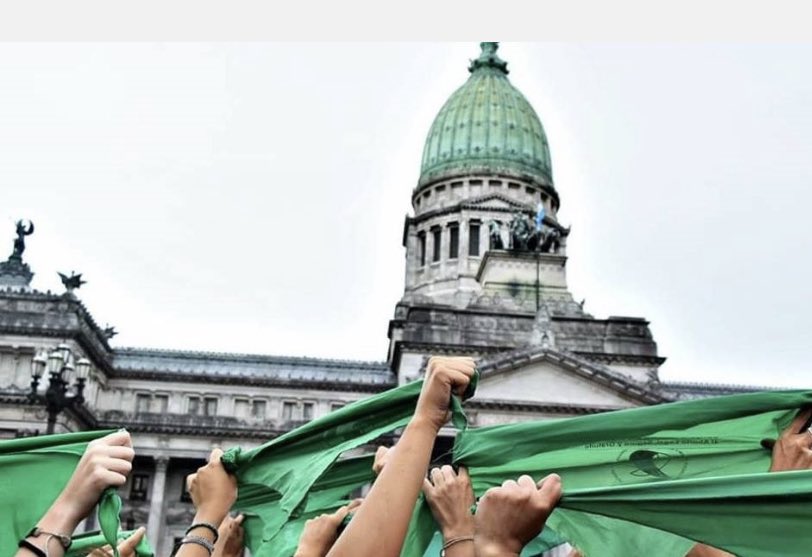
The significant growth of the campaign throughout the years can be attributed to the growth of a broader feminist movement, which shifted some public focus onto women’s realities. For example, the increase in the number of femicides inspired the movement ‘Ni una menos’ (Not one less), a grassroots collective fighting to put an end to violence against women.
The campaign for abortion rights seized on this and framed criminalization of abortion as another example of violence against women, making the state responsible for their inaction in the face of preventable deaths.
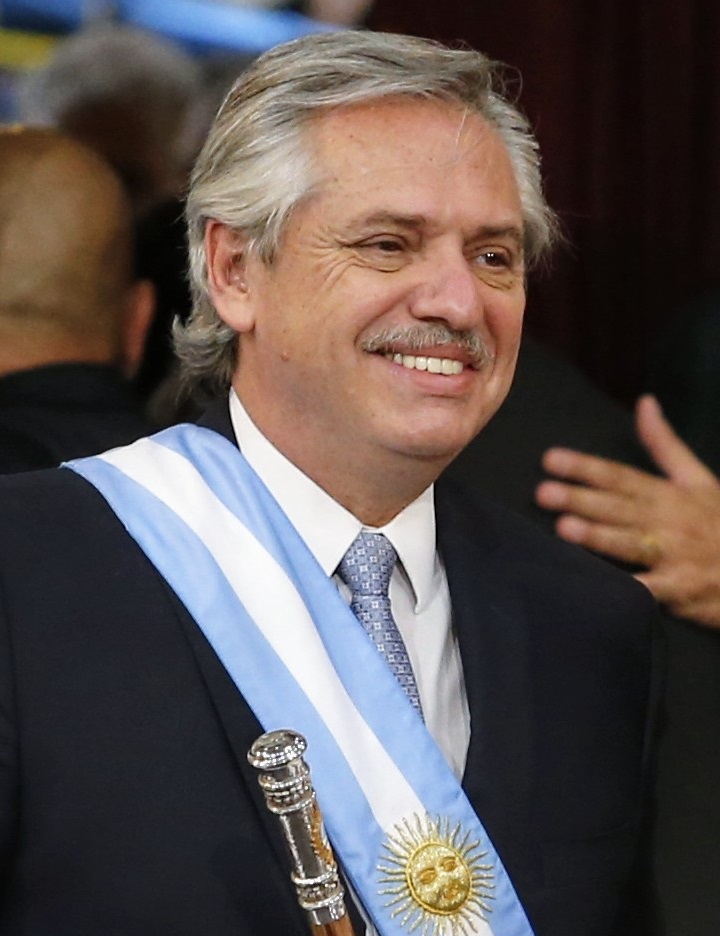
Most of these factors that explain the success of the movement were present already in 2018, when the Senate rejected a similar bill to legalize abortion. Only one was missing: the support from the executive branch. This was finally secured in 2019: Argentines elected President Alberto Fernandez, whose campaign promises included the legalization of abortion.
The movement proved it was possible to win a presidential election on a platform to legalize abortion. The shift of electoral calculations had finally happened.
Abortion legalization is a historic victory for Argentine feminists and for Latin America as a whole. The Argentine campaign has inspired and given renewed hope to activists across the region—like those in Colombia awaiting the decision of the Constitutional Court on a case that might lead to the decriminalization of abortion in their country. Across the Andes, women in Chile—who in 2017 succeeded in introducing some few exceptions to the total ban on abortion they had as a legacy of the Pinochet years—are now going for more and fighting for abortion access.
But the fight is not over: Implementation of the new law poses the next challenge. Those against legalization have already expressed their will to declare the law unconstitutional. Many doctors have expressed their desire to be conscientious objectors.
The movement is aware the aftermath of this success is full of challenges and is ready for the fight. The Network of Health Professionals for the Right to Choose is already organizing a database with detailed information of doctors and hospitals that are willing to abide by the law and provide abortions.
And the feminist fight does not end with abortion. The new item in the agenda: complete separation of church and state. The symbol: an orange scarf. It seems in Argentina, orange is the new green.
You may also like:
Our opponents are using the lame duck period—the time between now and when the new president is inaugurated, and a new Congress convenes—to do as much damage as they can. Help ensure Ms. remains strong and independent during this period of challenge and change. If you found this article helpful, please consider supporting our independent reporting and truth-telling for as little as $5 per month.




